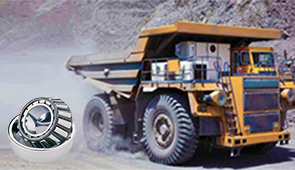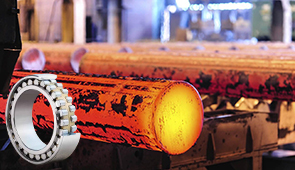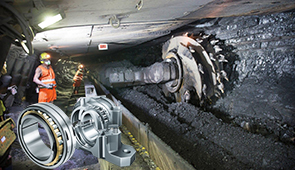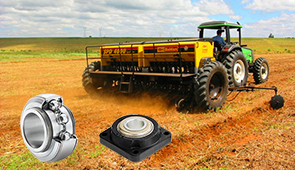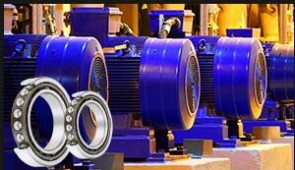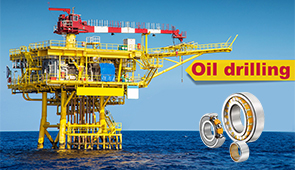Understanding Lube Oil: Choosing the Right Oil-Based Lubricant
Oil-based lubricants find applications for ensuring the effective functioning of machinery and for enhancing their longevity across industries. Choosing an appropriate lube oil is not a matter of preference but an informed choice derived from an understanding of its composition, properties, and the requirements of its specific application. Given the wide array of products sold in the markets, the task of choosing the best makes an astray decision without considering viscosity, thermal stability, or incompatibility, among others. This article serves to dispel fog from the choice, allowing you to still carry in your mind the principal issues and technical considerations for a well-informed choice. In any equipment for enhancing performance for reducing wear, or improving energy efficiency, one idea of the available lubricants must be considered.
Introduction to Lube Oil
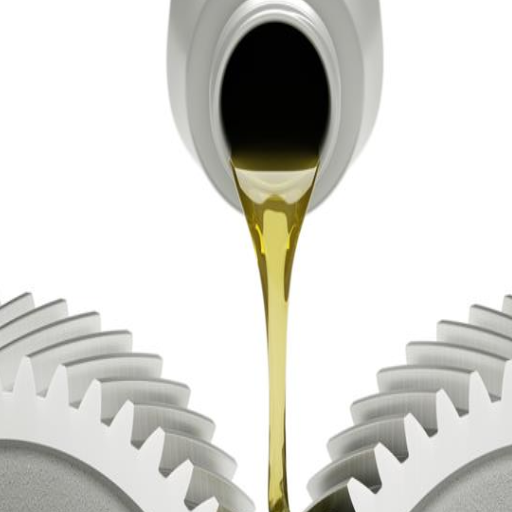
Definition and Role of Lube Oil
Lube oil, or lubricating oil, describes those specialized fluids that are used for decreasing friction with heat, and wear between mechanical components under motion. The function of this oil is principally to form a protective oil film at the interface, thereby diminishing the possibility of direct metal-to-metal contact that damages the parts and reduces operational efficiency. Essentially, this film allows equipment to run smoothly under varied pressure and temperature in the working environment.
Apart from lubricating the friction, it also gives heat to the mechanical system. By absorbing heat from the moving parts, it prevents the components from overheating and thus maintains the thermal equilibrium of the system. Besides, the oil also captures and retains foreign particles and contaminants, thereby keeping the essential parts clean and protecting them from abrasive effects caused by dirt or foreign particles.
The viscosity, thermal stability, and resistance to oxidation of lubricant oil greatly influence its ability to function under a given set of operating conditions. A correct type of lubricating oil always enhances the life of machines and their efficiency. Hence, lube oils find application in industries, automotive engines, and other mechanical systems where constant and dependable performance is required.
Historical Context of Lubrication Technology
Lubrication technology has seen a long-term evolution since the advent of the earliest human civilizations. Some evidence suggests that even the Egyptians might have utilized animal fats and plant oils for purposes of friction reduction and facilitated the movement of big blocks during construction, by way of comminution related to pyramid building. Such very original techniques laid the foundation for understanding friction and mechanical lubrication.
With this revolution in machinery and increased complexity in manufacturing processes, requisite lubrication treatments were enhanced. Mineral oils became the greatest advancement in the age of lubrication, overtaking natural oils and fats due to the superior thermal stability and longer operational life they offer. Systematic research and development in the science of lubrication were born during this time, bringing forth oil refining and additive technologies for increasing performance.
The industry of lubrication has seen a lot of progress during the 20th century by way of the development of synthetic lubricants and different formulations suitable for the requirements of contemporary machinery, aviation, and automotive engines. These developments also laid special emphasis on viscosity control, oxidation resistance, and temperature adaptability, fine enough to affix the country’s more and more complicated mechanical systems with high efficiency and reliability. Nowadays, with the unending process of joining tribological research with material science, lubrication technology acts as the backbone of all industrial and technological evolutions.
Relevance in Industrial and Automotive Sectors
Lubricants ensure that machines perform efficiently, from industrial gearboxes to automotive engines. They reduce friction between moving elements that eventually cause abrasion; hence, they also contribute to the lifespan extension of emergency components. This efficiency translates to economic savings in maintenance and enhanced operational reliability. In the absence of lubricants, machines end up overheating and failing much too early, thus compromising production schedules or vehicle performance.
The industrial application of lubrication involves friction reduction only as a side effect. Be it turbines, conveyor belts, or any other manufacturing equipment, it allows for graceful functioning at high loads and speeds. Modern synthetic lubricants, aided by advanced formulation technology, withstand great pressure and temperature-high requirements in aerospace, power generation, or heavy manufacturing industries. According to tribology studies, specialized lubricants may provide up to 30% greater energy efficiency, which translates into substantially lower operational costs.
Likewise, for an engine to perform well and to save on fuel, it must be lubricated in the automotive sector. With increased regulatory pressure for emission reduction, advanced engine oils assure cleaner combustion by maintaining temperature and viscosity at optimum levels under varying operating conditions. Innovations such as low viscosity oils and hybrid-compatible lubricants are developed to support the special requirements of present-day vehicles, including hybrids and e-cars. These trends directly describe how lubrication forms a basis for sustainability and meeting environmental standards.
Importance of Lube Oil in Machinery and Automotive Maintenance
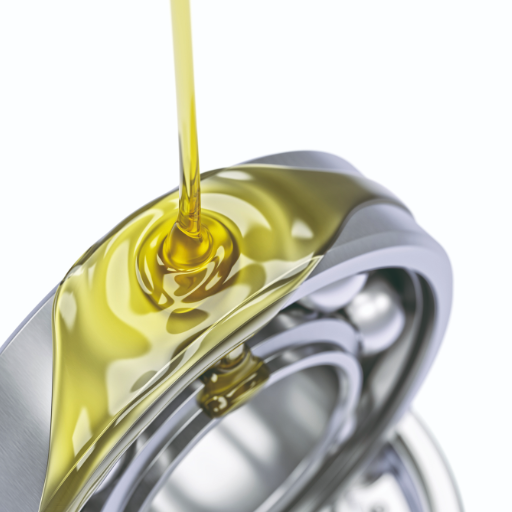
Reducing Friction and Minimizing Wear
The principal function of lube oil is to reduce friction between moving parts in a machine or automotive engine, thereby preventing wear and prolonging the life of these parts. By contacting each surface with a thin film, the lube oil aims at facilitating the movement while preventing direct contact of two metal surfaces. Such contact, if sustained, places one of the surfaces at risk of abrasive or adhesive wear. Proper lubrication accordingly ensures high efficiency as less energy is lost in friction. This energy efficiency leads to lower fuel consumption in automotive instances and lower operation costs in industrial cases.
Currently, lubricant formulation technology uses additives like anti-wear agents, extreme pressure agents, and friction modifiers. These additives enable the oil to support high loads, remain stable at high temperatures, and lower microscopic surface roughness. For instance, zinc dialkyldithiophosphate (ZDDP), one of the most popular anti-wear additives, chemically reacts with metal surfaces under heat and pressure to form a protective film against wear-induced failures. Moreover, synthetic lubricants engineered from tailored molecular structures show the best performance under severe environmental conditions, which include very high or low temperatures.
Less friction and minimal abrasion have vast implications beyond the immediate operational benefits. So, decreasing friction lowers heat generation. This, in turn, prevents overheating and degradation of lubricant and machinery components. Hence, there are fewer maintenance intervals, longer service life of the equipment, and greater reliability. From an environmental point of view, reducing energy consumption through advanced lubricants directly aligns with the global objectives of sustainability by reducing the carbon footprint arising from machinery and automotive operations. These factors collectively establish the critical role lubricating oil plays in contemporary mechanical systems.
Heat Dissipation to Prevent Overheating
Heat dissipation is important for systems and components to work well without failure. Material degradation sets in with heat, lowering efficiency until complete failure. Jointly with other properties, lubricating oils have thermal conductance attributes such that heat is absorbed and transmitted away from components so as to remain stable during operation. By circulating through the mechanical systems, hot spots that form from heat dissipation alone, commonly in areas of high friction, are decreased with oil at a cooler temperature level.
Modern formulations of lubricating oils come with intricate additive systems designed to enhance their thermal stability in high-temperature regimes. High-viscosity index oils, in particular, are provided to perform the dissipation of heat across a broad span of temperatures. Studies observe that systems employing synthetic lubricants with better heat transfer qualities are able to work up to 20% cooler compared to those employing a conventional mineral oil, substantially decreasing the chances of overheating.
Advanced cooling mechanisms such as oil coolers can be considered a further rise to the level of cooling and beyond the means of managing heat from lubrication. When partnered with sensor technologies for real-time thermal monitoring, these methods provide a full shield against thermal stress. Modern heat dissipation techniques protect equipment from thermal destruction, hence increasing its operational life and guaranteeing sustainable and reliable operations.
Protection Against Rust and Corrosion
Rust and corrosion pose serious problems in the durability and serviceability of equipment, pipelines, and other metal-based constructions. They appear when the metal surface comes into contact with moisture, oxygen, and various corrosive agents, damaging it over time. To fight corrosion, high-quality corrosion-resistant paints and surface treatments—in the form of epoxy or polyurethane layers—are generally used. These coatings act as protective layers, preventing exposure to the harsh environment and retarding oxidation. Anyhow, sometimes inhibitors such as zinc phosphate are added to the primer in order to suppress the chemical reactions leading to corrosion.
Even newer protection methods involving rust use potential-phase corrosion inhibitors (PVs) that emit protective molecules in enclosed atmospheres. These molecules deposit an equally thin and invisible layer, rendering almost worthless to contaminants on metal surfaces since it does not affect their appearance or functionality. Potential corrosion inhibitors prove invaluable for sectors requiring prolonged equipment preservation; whilst, in civil aviation, building, and marine fields, their usage is especially beneficial. If applied simultaneously with moisture-absorbing desiccants, the protection offered by VCIs against the possible formation of rust is practically guaranteed.
Further advancements include the deployment of smart corrosion-monitoring systems equipped with IoT sensors. Real-time data is collected on environmental factors, such as humidity, temperature, or even pH, giving the advantage of predicting maintenance requirements and making timely decisions for intervention. For instance, embedded sensors in the infrastructure can identify potential corrosion hot spots and alert the maintenance teams on their own. These innovations extend the life of metal components and also optimize maintenance cycles, thus cutting operational costs while providing assurance of safety in critical applications. The synergy of classical and modern approaches will act as a stiff barrier in protecting assets from rust and corrosion for years on.
Types of Lube Oil Available
Categories of Lube Oil: Mineral, Synthetic, and Bio-based
- Mineral Lube Oil: The refineries obtain mineral lube oil from the crude hydrocarbons. It is usually considered the most classical form of lubrication. This contains long-chain hydrocarbons, which provide enough enrichment to perform satisfactorily in standard applications, with moderate operating temperature and pressure requirements. From the standpoint of composition, mineral lube oil is able to offer good lubricity and remains stable at normal ambient conditions. On the contrary, it can hardly withstand extreme thermal fluctuations and can degrade or oxidize with time. These are the poorer side of mineral lube oils, being cheaper and more easily available, thus finding use in the industry where they do not have to meet stringent performance requirements.
- Synthetic Lube Oil: On the contrary, synthetic lube oil is produced via chemical synthesis to develop some superior properties over those of mineral oils. The carefully-tailored molecular structure endows it with excellent viscosity index, thermal stability, and oxidation-resistant properties, which make it ideal for severe environments with high loads or temperature extremes. Synthetic oils can preserve their functional attributes over a wider temperature range, thereby decreasing the need for oil changes or enhancing energy efficiency. Though it is expensive to purchase, the cost consideration can be balanced out by high longevity, which greatly cuts down on maintenance.
- Bio-Based Lube Oil: These lube oils are derived from renewable resources, such as vegetable oil or other organic raw materials. They are biodegradable lubricants as well as environmentally friendly ones that are keeping global efforts of reducing carbon footprints and supporting sustainable industrial applications. Being still somewhat of a new technology, these bio-based oils have been developed to be able to compete with wear protection, thermal stability, and oxidation stability. With recent fine-tuning of additive technology, their performance has been further improved, thus allowing these lubricants to be used by environmentally conscious industries like agriculture, forestry, and renewable energies.
Lube oils constantly evolve with modern, advanced formulations while tailoring each category for a specific application. The purpose would be to lipid the broad operational aspects of machinery being diversified and at the same time promoting strict environmental efficiency norms.
Specific Uses and Advantages of Each Type
One lubricant system consists of oils, greases, penetrating lubricants, and dry lubricants, each with definite advantages and uses being applied in various ways-for instance, friction reduction, sealing, heat transfer, and corrosion prevention.
|
Type |
Uses |
Advantages |
Limitations |
|---|---|---|---|
|
Oil |
Engines, gears, tools |
Heat dissipation, smooth flow |
Washed away by water |
|
Grease |
Bearings, chains |
Stays in place, seals |
High resistance |
|
Penetrating |
Stuck bolts, cleaning |
Rust removal |
Short-term use |
|
Dry |
Hinges, locks |
Dust-free, high-temp |
Washed by liquids |
Industries Utilizing Various Types of Lube Oil
The use of lube oils finds applications in many industrial sectors, each with its specific formulation meeting the operational and environmental criteria.
- Agriculture and Forestry: The operations heavily depend on biodegradable and environmentally friendly lubricants so as not to contaminate the soil and water. Lube oils nowadays are made to withstand high pressures in machinery such as tractors, harvesters, and chainsaws to perform efficiently on varied terrains.
- Automotive Industry: Another important application of lube oils is in automotive areas, contingent on the engine, transmission, and gearbox lubrication. Advanced synthetic oils provide maximum protection against wear and thermal degradation, maximize fuel efficiency, and comply with strict emission norms.
- Aerospace Industry: Because they are subjected to high temperature and very high pressure extremes, aviation-grade lubricants need to be thermally stable and have resistance against extreme pressure. These oils ensure the precision of jet engines, turbines, and hydraulic systems, which work under high altitudes and changing climates.
- Marine Industry: Marine engines, particularly large cargo ships, have to be supplied with the very best lubricating oils to resist rust and to separate themselves from water. The lubricating regime contributes to the endurance and dependability of marine vessels in such saline and humid conditions.
- Manufacturing and Heavy Industry: For manufacturing, a lubricant has to work extremely well against wear under high-load applications. For example, food-grade lubricants are used on production lines where safety and contamination needs stand first.
- Renewable Energy: Specialized lubricants are required for wind turbines and renewable energy equipment to face the ever-varying atmosphere and sustain long operational life spans. These oils help set up a balance between maintenance costs and energy efficiency.
Due to extraordinary research and innovative activities, lube oil formulations nowadays respond to the industrial-specific condition while meeting environmental regulatory requirements. Thus, these new lube oils enable machinery to operate in an efficient manner with an almost immeasurable reduction in downtime and operational costs.
How to Choose the Right Lube Oil
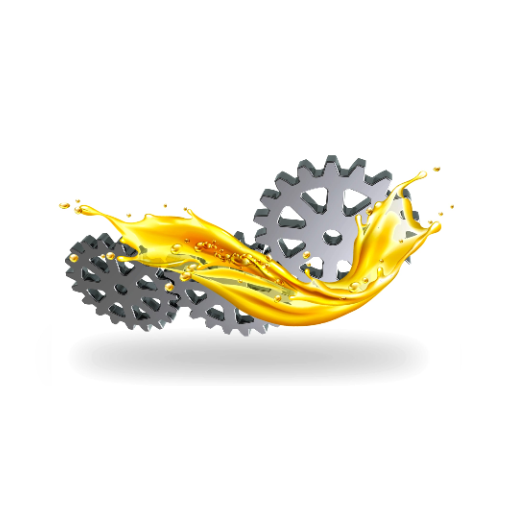
Step-by-Step Guide to Selecting Lube Oil
- Understand the Machineries Specifications: Side-by-side with the equipment or machinery manual, the grade of viscosity required and any considerations for additives specified by the manufacturer, as well as performing the set KPIs versus the lube oil, should be followed to ensure that these specifications meet the performance criteria at its optimum level.
- Review Operating Conditions: Think about the working arena of the machinery-temp ranges, pressures under load, and contaminant exposure of any form-dust, water, chemical, etc. High temperature may require oil with good thermal stability, whereas heavily loaded machinery would ideally use an anti-wear type of oil.
- Consider Velocity Requirements: This is important because the oil’s viscosity must be enough for it to cling to surfaces in moving parts to form a protective lubricating film. For instance, low-viscosity oils are recommended in low-temperature settings to ensure easy flow during start-up. High-viscosity oils are, however, often demanded at high temperatures or heavy loads.
- Industry Standards and Certifications Should Take Priority: In all cases, oils should be selected that meet or exceed the critical industry standards (for example, the API, ISO, and ACEA standards). Such certifications corroborate the ability of the oil to meet globally accepted performance and reliability criteria and basically reflect how well the oil is able to service an industry’s needs.
- Consider Additive Packages: The modern lube oils are formulated with very advanced additive packages that enhance the performance characteristics like oxidation, corrosion, detergency, and anti-foam protection. You should choose an oil relevant to your machinery’s special conditions, such as those that require enhanced load or extreme pressure additives.
- Assess Environmental Impact: Use environmentally friendly lubricants wherever possible, including biodegradable-based oils or oils that are low in toxicity. This consideration has a bearing on work in an ecologically sensitive area. Make sure that all activities are in compliance with current environmental laws to avoid potential fines and support sustainable practices.
- Compare Manufacturer Recommendations and Test Data: While selecting a lubricant, the recommendations from credible manufacturers should be considered along with their respective data sheets that corroborate product claims. This may entail claims on oil durability or savings in operational costs, which would have been evaluated through real-world tests to establish that the lubricant indeed prolongs the life of machines and increases efficiency.
If followed, this systematic approach will allow operators to carefully select the most suitable lubricant and thus reduce wear and costs, prolong machinery life, and contribute to operational cost efficiency. Properly selected lube oils sustain machinery performance as well as environmental upkeep, which is what all modern operational standards advocate.
Factors to Consider in Oil Selection
- Viscosity and Temperature Considerations: Viscosity is the first property to be considered when selecting an oil, together with its behavior at operating temperature. The viscosity of oil generally determines the ability to form a lubricating oil film between moving surfaces and to reduce friction and wear. It is important to select an oil with an appropriate viscosity grade for the temperature at which the machinery is operating. Oils having insufficient viscosity at high temperatures will not provide good anti-wear properties, while those oils that are too viscous at low temperatures will drain away power and reduce machinery efficiency.
- Additives Composition and Performance: Additives are considered all-important-to-augmenting-the-properties-of-a-base-oil. These chemicals act and are intended to perform certain functions: lowering oxidation, stopping rust formation, preventing foam, and improving extreme pressure (EP) performance. For example, anti-wear additives like zinc dialkyldithiophosphate (ZDDP) are used for assisting in industrial and automotive applications to protect metal surfaces under load. Knowing what the additive package does ensures that the oil performs under a variety of load and environmental conditions.
- Compatibility with Materials and Components: Oil compatibility with the materials of the machinery, such as seals, gaskets, or metal components, is another paramount consideration. Incompatible oils may attack these materials, causing seal erosion, leaks, early failures, and expensive downtime. Thereby, ensuring compatibility tests are made along with the evaluation of maintenance manuals will minimize risk as well as warranty of operational reliability for the long term.
- Industry standards and regulations: The chosen oils shall meet the relevant standards of industry and authorities, thus carrying the designation of being approved ISO, DIN, ASTM, or any other national or regional standards. These standards guarantee that a lubricant will conform to standardized requirements of safety, reliability, and efficiency. In addition, environmental regulations must be accounted for; biodegradable oil standards have become a vital consideration, especially with operations in sensitive environmental zones.
In evaluating these elements scrupulously, the operators and maintenance teams would be able to make decisions based on data supported by technical standards and giving the machinery a long life along with operational excellence.
Benefits of Proper Lubrication
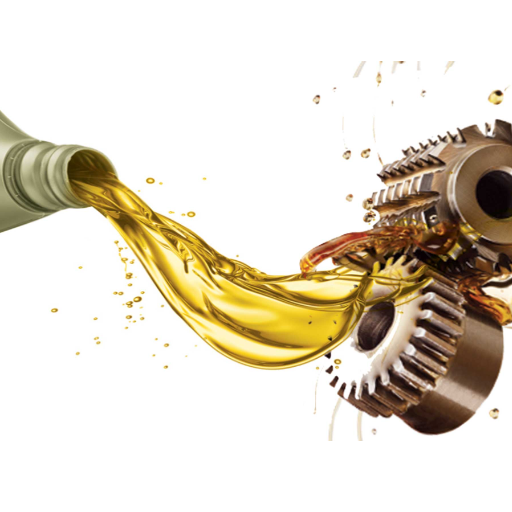
Improved Performance and Energy Efficiency
Lubrication holds utmost importance to improve equipment performance and energy efficiency. Speaking from a technical point of view, friction reduction acts as a catalyst between moving interfaces to wear them less and does not allow for smoother mechanical operation. Also, it extends the life of the equipment. When selecting the proper type and viscosity of lubricant for different applications, operators give their machines the chance to work with the least amount of energy possible. Ultimately, this translates into real energy savings over time.
Perfect lubrication can negate heat generation inside machines, curtailing thermal stress and enabling smooth operation when loaded heavily. This is all the more vital in highly demanding industries, where operational efficiency translates directly to output and production costs. These advanced lubricants with special additives assist further in energy conservation by imparting film strengths superior to internal power loss caused by mechanical resistance.
I believe proper lubrication management is the key to the conservation of environmental resources and cost efficiency. A good lubrication program assures optimal conditions for machinery functioning, energy consumption, environmental impacts, etc. Investment in quality lubricants, followed by their best use and monitoring, should ensure excellence at all times.
Preventing Costly Repairs and Downtime
A priceless time is lost in maintaining and monitoring machinery, and hence, this demands an adequate machinery maintenance and monitoring approach. Preventive maintenance scheduling is an important factor, involving regular inspection, service, and timing for parts replacement according to recommendations of manufacturers or operational data. In an unanticipated manner, this strategy maintains the failure of equipment gates and prolongs the working life of one particular machine. For example, recent statistics prove that if manufacturers strive toward predictive maintenance, they will be able to minimize their downtime by 30% to 50% and also reduce their maintenance costs by 10% to 40%. These numbers emphasize the need for a maintenance regimen.
Another essential aspect is the use of advanced diagnostic and monitoring technologies. Vibration analysis or thermography and oil condition monitoring are examples of modern systems that allow operators to detect early signs of wear, misalignment, or lubrication deficiencies. These technologies provide maintenance with a prescriptive prescription, i.e., they help identify defects or problems that might lead to actual problems. For example, vibration analysis is used for the detection of bearing or shaft faults-a situation that, if unattended to, might lead to complete equipment failure. Thus, in combination with monitoring software, these systems present valuable real-time data to ascertain maintenance schedules and avoid unnecessary downtime.
Workforce training or further upgrade of employee skills, compliance with industry standards, and application of best practices are truly important for operational efficiency. Properly trained maintenance staff will need fewer instructions to perform maintenance activities using diagnostic tools and directly apply their skills to rectifying an issue as it is under development. If the equipment is meant for commercial use, one must ensure the assessment against internationally accepted standards such as ISO 55001 on asset management, which establishes an approach to risk reduction and value maximization throughout the life cycle of the asset. Being in synergy, training, standards compliance, and technology-based operations will result in a lower frequency of repairs and less downtime, which translates to huge savings on costs and increased productivity.
Frequently Asked Questions (FAQ)
Q: What is lube oil?
A: Lube oil, generally known as a lubricant, is a substance considered to reduce friction between opposing surfaces in various applications, including engines and machinery. It can be of oil or synthetic type and plays an important role in the health and lifespan of mechanical components.
Q: How does lube oil operate in engines?
A: Lubricants in engines reduce friction and wear in the moving parts, mainly the piston and valve train. The oil also helps cool engine components, prevents rust and corrosion of those parts, and at the same time, oil assists in the proper working of the engine.
Q: What are the different types of lube oil?
A: Lube oils include mineral oil, synthetic oil, and oil-based lubricants. Every type has a set of properties and applications, with synthetics often being best performing under stringent conditions.
Q: Why are oil changes necessary?
A: Changing the oil is necessary to prevent the degradation of the lubricant that can lead to insufficient lubrication, increase friction, and possibly cause catastrophic engine failure. Thus, through regular oil changes, the engine is kept in optimum condition for best performance and a longer life.
Q: Can lube oil be used for personal lubricants?
A: While lube oil is mainly designed for mechanical uses, some oil substances, such as coconut oil and petroleum jelly, are sometimes used as personal lubricants. However, to avoid irritation or infections, it is recommended to use top-quality, safe products intended for sexual activities.
Q: What are the environmental implications of lube oil?
A: The environmental quality of lube oils includes possible irrigation of soils and contamination of water sources if not disposed of correctly. Using synthetics gives you an advantage in that it contributes to lower emissions and reduced environmental degradation compared to petroleum-based lubricants.
Q: Are oil-based lubes better than water-based ones?
A: On the one hand, oil-based lubricants last a long time and serve well for the reduction of friction, but water-based lube is easier to clean and is less likely to damage materials, such as latex condoms. The problem is that oil-based lubricants might cause problems with some condoms and are not suitable for every sexual activity.
Q: What are the usual additives for motor oils?
A: Additives present in motor oils are intended to improve performance. They may act as detergents to prevent sludge formation, or anti-wear agents to reduce mechanical friction, or antioxidants that prevent oxidation and degradation with time.
Q: Is a lube oil helpful for vaginal dryness?
A: Just as with products made for sex, there are ways to help with the dryness of the vagina and make sexual intercourse more comfortable, but one should always remember to use ones that are safe for the human body. With oil-based personal lubricants, there is the possibility of them being unsuitable for certain individuals, so it is always better to ask for professional advice.
Q: How do I select a lubricant suitable for my needs?
A: When choosing a lubricant, consider what you intend to use it for, whether it must be compatible with condoms, and personal preferences regarding texture and longevity. Try different types, such as silicone or water-based, to determine which lubricant fits best for your sexual activities or personal comfort.
UCTH213-40J-300 with Setscrew(inch)
CNSORDERNO: Normal-duty(2)
TOGN: UCTH213-40J-300
SDI: B-R1/8
SD: 2 1/2
UCTH212-39J-300 with Setscrew(inch)
CNSORDERNO: Normal-duty(2)
TOGN: UCTH212-39J-300
SDI: B-R1/8
SD: 2 7/16
UCTH212-38J-300 with Setscrew(inch)
CNSORDERNO: Normal-duty(2)
TOGN: UCTH212-38J-300
SDI: B-R1/8
SD: 2 3/8
UCTH212-36J-300 with Setscrew(inch)
CNSORDERNO: Normal-duty(2)
TOGN: UCTH212-36J-300
SDI: B-R1/8
SD: 2 1/4
UCTH211-35J-300 with Setscrew(inch)
CNSORDERNO: Normal-duty(2)
TOGN: UCTH211-35J-300
SDI: B-R1/8
SD: 2 3/16
UCTH211-34J-300 with Setscrew(inch)
CNSORDERNO: Normal-duty(2)
TOGN: UCTH211-34J-300
SDI: B-R1/8
SD: 2 1/8









